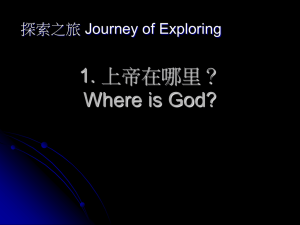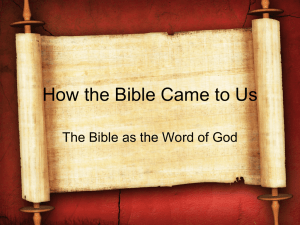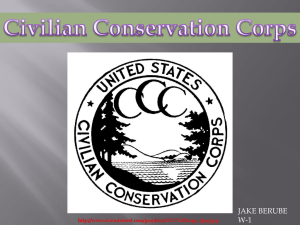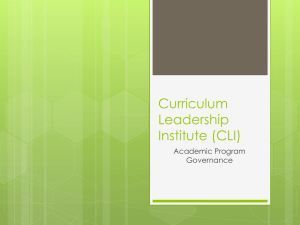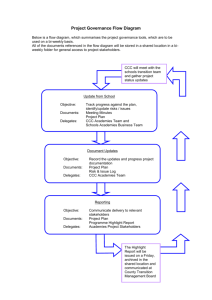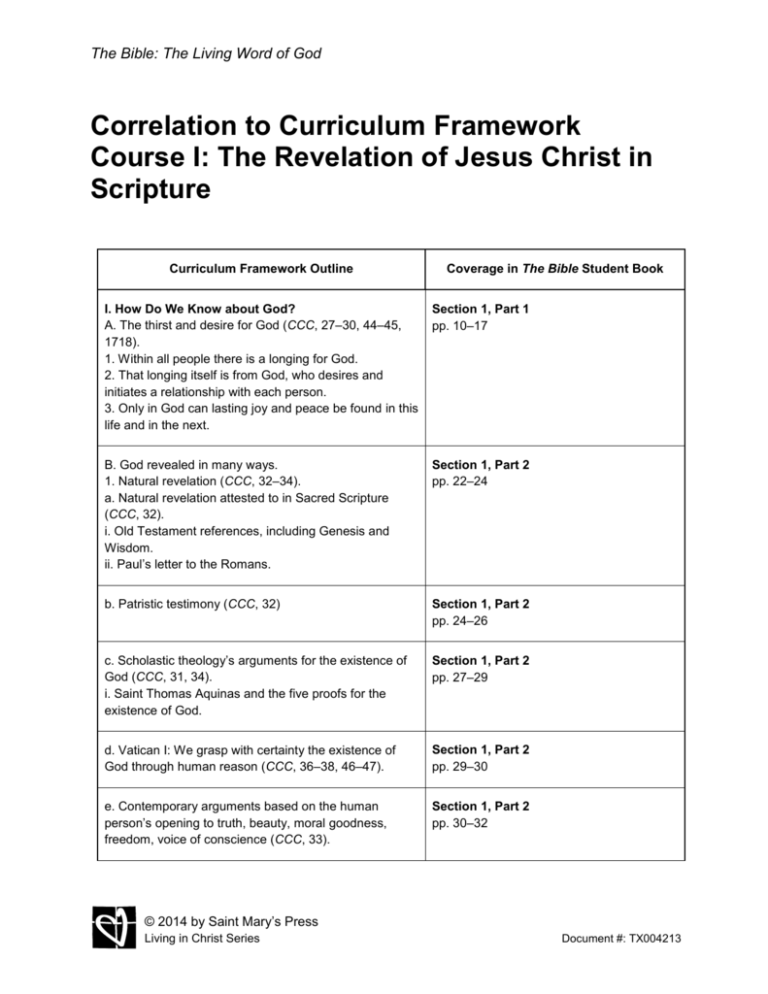
The Bible: The Living Word of God
Correlation to Curriculum Framework
Course I: The Revelation of Jesus Christ in
Scripture
Curriculum Framework Outline
Coverage in The Bible Student Book
I. How Do We Know about God?
A. The thirst and desire for God (CCC, 27–30, 44–45,
1718).
1. Within all people there is a longing for God.
2. That longing itself is from God, who desires and
initiates a relationship with each person.
3. Only in God can lasting joy and peace be found in this
life and in the next.
Section 1, Part 1
pp. 10–17
B. God revealed in many ways.
1. Natural revelation (CCC, 32–34).
a. Natural revelation attested to in Sacred Scripture
(CCC, 32).
i. Old Testament references, including Genesis and
Wisdom.
ii. Paul’s letter to the Romans.
Section 1, Part 2
pp. 22–24
b. Patristic testimony (CCC, 32)
Section 1, Part 2
pp. 24–26
c. Scholastic theology’s arguments for the existence of
God (CCC, 31, 34).
i. Saint Thomas Aquinas and the five proofs for the
existence of God.
Section 1, Part 2
pp. 27–29
d. Vatican I: We grasp with certainty the existence of
God through human reason (CCC, 36–38, 46–47).
Section 1, Part 2
pp. 29–30
e. Contemporary arguments based on the human
person’s opening to truth, beauty, moral goodness,
freedom, voice of conscience (CCC, 33).
Section 1, Part 2
pp. 30–32
© 2014 by Saint Mary’s Press
Living in Christ Series
Document #: TX004213
Correlation to Curriculum Framework Course I: The Revelation of Jesus Christ in Scripture
Curriculum Framework Outline
Coverage in The Bible Student Book
2. Divine Revelation.
a. Definition / meaning (CCC, 50–53, 68–69).
Section 1, Part 3
p. 34
b. Scripture as a divinely inspired record of God’s
Revelation in history (CCC, 54–64, 70–72).
i. Abraham, Isaac, Jacob (CCC, 59, 145, 147).
Section 1, Part 3
pp. 34–39
Section 3, Part 1
pp. 97–102
ii. Moses (CCC, 61).
Section 1, Part 3
p. 38
Section 3, Part 2
pp. 105–114
iii. Old Testament prophets (CCC, 61–64, 522).
Section 1, Part 3
p. 39
Section 3, Part 4
pp. 129–140
iv. Wisdom literature.
Section 1, Part 3
p. 39
Section 3, Part 5
pp. 142–154
v. Preparation through John the Baptist (CCC, 523,
717–720).
c. Jesus Christ, the first and the last, the definitive Word
of Revelation, the one to whom all Scripture bears
witness, is God’s only Son (CCC, 65–67, 73, 101–104,
134, 423).
Section 1, Part 3
pp. 39–41
3. The transmission of Divine Revelation (CCC, 74–95).
a. Apostolic Tradition (CCC, 74–79, 96).
Section 1, Part 3
pp. 41–45
b. The relationship between Tradition and Sacred
Scripture (CCC, 80–83, 97).
Section 1, Part 3
pp. 43, 45–47
© 2014 by Saint Mary’s Press
Living in Christ Series
Document #: TX004213
Correlation to Curriculum Framework Course I: The Revelation of Jesus Christ in Scripture
Curriculum Framework Outline
Coverage in The Bible Student Book
c. The Deposit of Faith and the role of the Church (CCC,
84–95, 98–100).
Section 1, Part 3
p. 43
II. About Sacred Scripture
A. Divine Inspiration
1. Inspiration is the gift of the Holy Spirit by which a
human author was able to write a biblical book that
really has God as the author and that teaches faithfully
and without error the saving truth that God willed to be
consigned to us for our salvation (CCC, 105, 135).
2. Because God inspired the biblical writers, he is the
author of Scripture (CCC, 105–106, 136).
Section 2, Part 1
pp. 50–51
3. Because the human authors needed to use the
language and thinking of their time, we need to study
the conditions and use of language in the context of
their time and understand what they intended to
communicate, remembering that these human authors
might not have been conscious of the deeper
implications of what God wanted to communicate (CCC,
106, 108–114).
Section 2, Part 1
pp. 50–51
4. The Bible is inerrant in matters of Revelation and
faith: because God is the author of Scripture, all the
religious truths that God intends to reveal concerning
our salvation are true; this attribute is called “inerrancy”
(Dei Verbum [DV], 11; CCC, 107).
Section 2, Part 1
pp. 50–51
5. The Bible is a sacred text for Christians; it contains in
the Old Testament writings sacred to the Jews.
Section 2, Part 1
p. 56
Section 2, Part 3
p. 77
B. How the Bible came to be.
1. Oral tradition and its role (CCC, 76, 126).
Section 2, Part 1
pp. 51–54
2. Development of the written books (CCC, 76, 106).
Section 2, Part 1
pp. 51–54
© 2014 by Saint Mary’s Press
Living in Christ Series
Document #: TX004213
Correlation to Curriculum Framework Course I: The Revelation of Jesus Christ in Scripture
Curriculum Framework Outline
Coverage in The Bible Student Book
3. Setting the canon of Scripture (CCC, 120).
a. Apostolic Tradition is the basis for which books the
Church included (CCC, 120, 138).
b. Sometimes other criteria came into play, e.g., the
Gnostic gospels were rejected in part because they did
not include, or shied away from, the suffering and death
of Jesus.
c. Local Councils of Hippo (AD 393) and Carthage (AD
397).
d. Ecumenical Council of Trent (AD 1545–1563).
Section 2, Part 1
pp. 56–57
4. Translations of Scripture.
Section 2, Part 1
pp. 58–60
C. Sacred Scripture in the life of the Church.
1. Importance of Sacred Scripture (CCC, 131, 133, 141).
Section 5, Part 1
pp. 211–212
2. Study of Sacred Scripture (CCC , 132).
Section 5, Part 1
pp. 211–212
3. Scripture and prayer.
a. Liturgy of the Hours (CCC, 1176–1177).
Section 5, Part 1
pp. 215–218
b. Scripture at Mass and other liturgies (CCC, 103,
1096, 1100, 1184, 1190, 1349).
Section 5, Part 1
pp. 212–215
c. The Psalms and the Lord’s Prayer are biblical prayers
shared by all Christians (CCC, 2585ff., 2759ff.).
Section 5, Part 1
pp. 218–220
d. Lectio divina: a meditative, prayerful approach to
Scripture (CCC, 1177, 2708).
Section 5, Part 2
pp. 225–227
e. Scripture as basis for individual prayer and for prayer
within small Christian communities and other parish,
school, or local gatherings (CCC, 2653–2654).
Section 5, Part 2
pp. 229–230
III. Understanding Scripture
Section 2, Part 2
pp. 61–64
© 2014 by Saint Mary’s Press
Living in Christ Series
Document #: TX004213
Correlation to Curriculum Framework Course I: The Revelation of Jesus Christ in Scripture
Curriculum Framework Outline
Coverage in The Bible Student Book
A. Authentic interpretation of the Bible is the
responsibility of the teaching office of the Church (CCC,
85–87, 100).
1. Divino Afflante Spiritu (Pius XII, 1943; permitted
limited use of modern methods of biblical criticism).
2. Dei Verbum (Vatican II, 1965; Church teaching on
Revelation).
3. Pontifical Biblical Commission, Interpretation of the
Bible in the Church, 1993, 5–19.
B. Criteria for interpreting the Sacred Scripture (CCC,
109–114, 137).
1. Read and interpret Sacred Scripture within the
tradition and teaching of the Church.
2. Give attention both to what the human authors
intended to say and to what God reveals to us by their
words.
3. Take into account the conditions of the time when it
was written and the culture where it was written.
4. Read and interpret Sacred Scripture in the light of the
same Holy Spirit by whom it was written (DV, 12–13).
5. Read and interpret each part of Sacred Scripture with
an awareness and understanding of the unity of the
content and teaching of the entire Bible.
Section 2, Part 2
pp. 64–66
C. Senses of Scripture (CCC, 115, 118–119).
1. The literal sense: the meaning conveyed by the words
of Scripture and discovered by exegesis (CCC, 109–
110, 116).
Section 2, Part 2
p. 68
2. The spiritual sense (CCC, 117).
a. Allegorical sense: recognizing the significance of
events in the Bible as they relate to Christ.
b. Moral sense: Scripture teaches us and encourages us
how to live and act.
c. Anagogical sense: Scripture speaks to us of eternal
realities.
Section 2, Part 2
pp. 68–70
D. The Bible in relation to science and history (CCC, 37,
159, 1960).
Section 2, Part 2
p. 70
© 2014 by Saint Mary’s Press
Living in Christ Series
Document #: TX004213
Correlation to Curriculum Framework Course I: The Revelation of Jesus Christ in Scripture
Curriculum Framework Outline
Coverage in The Bible Student Book
1. The Church teaches us how to relate truths of faith to
science.
2. There can be no conflict between religious truth and
scientific and historical truth (CCC, 159).
Section 2, Part 2
pp. 71–72
3. The difference between the Catholic understanding of
Scripture and that of those who interpret the Bible in an
overly literalist, fundamentalist way or with an approach
limited to symbolic understanding.
Section 2, Part 2
pp. 70–71
E. Ancillary approaches to Scripture.
1. Research done by scholars’ critiques of Scripture’s
texts, history, editing, etc.
2. Biblical archaeology: discoveries of Dead Sea Scrolls,
Nag Hammadi, targums, and other authentic ancient
texts.
3. The forms of literature in the Bible.
Section 2, Part 2
pp. 72–74
IV. Overview of the Bible
A. Old Testament (CCC, 121–123, 138).
1. This is the name given to the forty-six books that
make up the first part of the Bible and record salvation
history prior to the coming of the Savior, Jesus Christ
(CCC, 120).
a. Many Protestant Bibles have only thirty-nine books in
the Old Testament; other Protestant Bibles contain the
additional seven, referring to them as
“deuterocanonical.”
b. Catholics rely on the Greek version of the Old
Testament for their Bible, while Protestants tend to rely
on a Hebrew version.
Section 2, Part 3
pp. 76–79
2. It is called the “Old” Testament because it relates
God’s teaching and actions prior to the coming of Jesus
Christ, who is the fullness of Revelation. It also focuses
on the covenant God made with the Jewish people,
which is called the “Old Covenant” to distinguish it from
the New Covenant made by Jesus Christ (CCC, 121–
123).
Section 2, Part 3
p. 77
© 2014 by Saint Mary’s Press
Living in Christ Series
Document #: TX004213
Correlation to Curriculum Framework Course I: The Revelation of Jesus Christ in Scripture
Curriculum Framework Outline
Coverage in The Bible Student Book
3. The Old Testament contains the Pentateuch, the
historical books, the wisdom books, and the prophetic
books.
Section 2, Part 3
pp. 79–81
B. New Testament (CCC, 120, 124–127).
1. This is the name given to those twenty-seven books
that compose the second part of the Bible and that focus
on the life and teachings of Jesus Christ and some
writings of the early Church.
2. The New Testament is composed of the Gospels, the
Acts of the Apostles, the Epistles or Letters, and the
Book of Revelation.
Section 2, Part 3
pp. 84–87
C. The unity of the Old Testament and the New
Testament (CCC, 124–125, 128–130, 140).
Section 2, Part 3
pp. 82–83
V. The Gospels
A. The Gospels occupy the central place in Scripture
(CCC, 125, 139).
1. They proclaim the Good News of Jesus Christ, the
Word of God, the definitive Revelation of God.
2. The Gospels contain a record of the life of Jesus
Christ and of his teachings and redeeming work.
3. The Gospels lead us to accept Jesus Christ in faith
and apply his teachings to our lives.
Section 2, Part 3
p. 83
Section 4, Part 1
pp. 157–159
B. Three stages in the formation of the Gospels (CCC,
126).
Section 4, Part 1
pp. 160–161
C. The Synoptic Gospels: Matthew, Mark, and Luke.
1. Approximate dates for each Gospel.
2. What is known about each of these three Evangelists.
3. The churches for whom Matthew, Mark, and Luke
wrote.
Section 4, Part 2
pp. 166–172
4. The contents of the Synoptic Gospels (CCC, 512–
667).
a. Infancy narratives in Matthew and Luke.
b. The Baptism of Jesus.
Section 4, Part 2
pp. 173–179
© 2014 by Saint Mary’s Press
Living in Christ Series
Document #: TX004213
Correlation to Curriculum Framework Course I: The Revelation of Jesus Christ in Scripture
Curriculum Framework Outline
Coverage in The Bible Student Book
c. The Temptation of Jesus.
d. Sermon on the Mount in Matthew; Sermon on the
Plain in Luke.
e. Jesus’ teaching, including the parables.
f. The miracles.
g. Last Supper, the Passion, death, Resurrection,
Ascension (CCC, 1329, 1337, 1366, 1323, 1412, 1521–
1522, 1532, 1708, 1992, 2020).
Section 4, Part 2
pp. 179–183
D. The Gospel of John.
1. Approximate date of the Gospel and churches for
which John wrote.
2. What is known about John.
Section 4, Part 3
pp. 185–187
3. The content of the Gospel of John.
a. The prologue (CCC, 241, 291).
b. John uses Christ’s dialogues and personal testimony
and is more mystical (CCC, 547–550).
c. John treats miracles as signs of Christ’s glory /
divinity—flows from John 1:14.
d. The Bread of Life Discourse (John, chapter 6).
e. Christ’s Last Supper Discourse and priestly prayer.
f. The Passion, death, and Resurrection.
Section 4, Part 3
pp. 187–195
VI. Challenges
A. Is it true that Catholics do not use or read the Bible?
1. No. Catholics use the Bible regularly. The Bible or
Scripture is an integral part of Catholic prayer life,
forming part of every Mass, every sacramental
celebration, and the official daily prayer of the Church—
the Liturgy of the Hours (CCC, 141, 1190).
2. The Church urges Catholics to use the Bible in
personal prayer (CCC, 2653–2654).
3. Scripture study and prayer groups using Scripture are
a common part of parish life.
4. In the fourth century, Saint Jerome said that
“ignorance of the Scriptures is ignorance of Christ”; this
underlines the importance of Scripture in the life of the
Church (CCC, 133).
Section 5, Part 1
pp. 210–218
Section 5, Part 2
pp. 224–227, 229–230
© 2014 by Saint Mary’s Press
Living in Christ Series
Document #: TX004213
Correlation to Curriculum Framework Course I: The Revelation of Jesus Christ in Scripture
Curriculum Framework Outline
Coverage in The Bible Student Book
B. Isn’t the Bible just another piece of literature?
1. No. Although Scripture contains various types of
literary forms and genres, it is more than just literature. It
is the inspired Word of God (CCC, 135).
2. Because it is not just another piece of literature,
Scripture cannot be either read or understood merely in
the same way as other literature (CCC, 108).
3. Scripture must always be read or interpreted in the
light of the Holy Spirit and under the direction of the
Church (CCC, 100, 111, 119, 137).
Section 2, Part 1
pp. 50–51
Section 2, Part 2
pp. 62–68
C. Is the Bible always literally true?
1. It depends on what one means by literally. The
Church does not always propose a literalist or
fundamentalist approach to Scripture but rather a
contextualist approach. The Church teaches that all of
Scripture is true on matters pertaining to religious and
salvific teaching because it is inspired by God for that
purpose (CCC, 107, 116).
2. The Bible has a definite historic basis for events
recounted in both the Old and the New Testaments; the
Church particularly upholds the historicity of the Gospels
(CCC, 126). However, the Church does not claim that
the Bible’s purpose is to present scientific or historical
facts (CCC, 107).
3. The Church gives guidelines for interpretation of
Sacred Scripture (see earlier in outline).
Section 2, Part 2
pp. 64–66, 70–72
D. Isn’t the Bible about the past? Why do people today
think it applies to them?
1. Although the Bible contains history, stories, and
teaching about events in the past, Scripture is the living
Word of God. The content is rooted in particular
moments in history, but the message is timeless and
universal.
2. God continues to speak to us through Scripture; this
is why the liturgies of the Church always contain
Scripture and why personal prayer that focuses on
Scripture is vital.
Section 5, Part 1
pp. 211–215
© 2014 by Saint Mary’s Press
Living in Christ Series
Document #: TX004213
Correlation to Curriculum Framework Course I: The Revelation of Jesus Christ in Scripture
Curriculum Framework Outline
Coverage in The Bible Student Book
E. Why do Catholics maintain beliefs and practices that
are not in the Bible?
1. The Bible is not the sole means that God chose to
hand on the truths of Revelation. Scripture and Tradition
are the two complementary ways Revelation is passed
down (CCC, 80, 97).
2. There are teachings that come through Tradition that
are not explicitly found in Scripture. However, nothing
taught through Tradition ever contradicts Scripture, as
both come from Christ through the Apostles (CCC, 82).
Section 1, Part 3
pp. 41–47
3. Apostolic Tradition refers to those things that Jesus
taught to the Apostles and early disciples, which were
passed down to us at first by word of mouth and were
only written down later. We identify these beliefs as
coming from Tradition and understand that this Tradition
is part of God’s Revelation to us (CCC, 83).
Section 1, Part 3
pp. 41–47
(The “Curriculum Framework Outline” column is adapted from Doctrinal Elements of a Curriculum Framework for the Development
of Catechetical Materials for Young People of High School Age, by the United States Conference of Catholic Bishops [USCCB]
[Washington, DC: USCCB, 2008], pages 6–10. Copyright © 2008, USCCB, Washington, D.C. All rights reserved. No part of this
work may be reproduced or transmitted in any form or by any means, electronic or mechanical, including photocopying, recording,
or by an information storage and retrieval system, without permission in writing from the copyright holder.)
© 2014 by Saint Mary’s Press
Living in Christ Series
Document #: TX004213



